Author Interview: Jane V. Blanchard
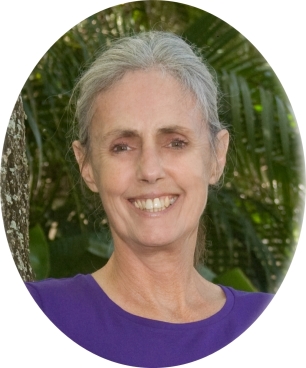
Which was the first ever long journey you ever took & how was that journey special for you?
After graduating from college with a degree in modern languages, I went to Spain with the hopes of getting a job and becoming fluent in Spanish. Looking back, it is hard to believe how naive I was. I had no job prospect, a literary vocabulary, very little money (about $150), and a plane ticket home should things not work out. Determined to make my way, I started applying for work. Within two days, I was working for a travel agency, greeting Americans at the airport and hosting them in Madrid.
Though my primary goal was not to travel, my being abroad for eleven months kindled my love of adventure, developed an ease in communicating with others unlike me, and gave me an appreciation of other cultures. I learned to be tolerant and patient of myself, of others, and of situations for which I had no control.
The night I met my future husband Dennis, I knew we shared a positive attitude and desire to live life as if we were parched—not sipping delicately on what life had to offer but gulping it with gusto. We wanted to create a treasure trove of memories so that in our old age we could sit in our rockers and reflect on a life well-lived.
When you got married in 1974 did you realize that one day you would become not only an author but also travel the world especially in your 60’s?
In 1974, as a newly wed, I did not dream of someday becoming an author writing about her travels. I just wanted to live a full life, one crammed with fond memories.
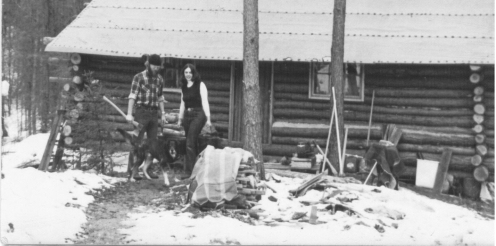
Can you please give my readers a brief description of your life before you wrote your first book of the Women of the Way series?
Some of our fondest recollections include living in a tent until December 3, 1976, while we built a log cabin in the forest of Winchendon, MA., where we lived without running water or electricity for two years. From there, we lived on a five-acre farm, growing food and selling eggs and meat to friends and co-workers. We loved being close to the earth, to animals, and to nature. In 1980, we moved to Hampstead, NH. There we raised two children and shared with them our love of the outdoors by hiking on local trails, climbing twenty 4,000-foot peaks in New Hampshire’s White Mountain range, and going on long-distance bike rides. In my fifties, I learned to mountain bike and came in second in the 2002 masters division of the Eastern Fat Tire Association competition. As you can see, our life has been full of adventures. So, when I turned sixty and started long-distance hiking, it was not out of character, just a new experience.
What made you want to write a book about your five-hundred-mile pilgrimage to Santiago de Compostela? Didn’t you think that the book may cater to only a certain reading audience?
While on my first long-distance hike along the Camino de Santiago in northern Spain, I talked with other female hikers. Their stories about why they were hiking 500 miles or more were intriguing. During one of the conversations, I realized that I had to write about these women and their stories. As I wrote Women of the Way: Embracing the Camino, I was more concerned with telling these women’s stories than targeting an audience. With more than 240,000 people completing the pilgrimage to Santiago annually, there are thousands of potential readers each year.
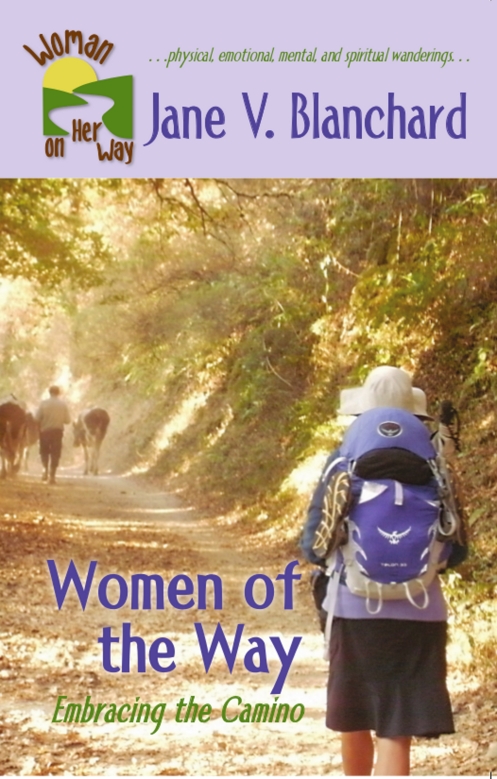
Can you give my readers a brief synopsis of your first book which is the Women of the Way: Embracing the Camino?
In short, the book is about my journey and the discussions I had with the women pilgrims I met on the pilgrimage. It is about embracing the Camino and the resulting personal changes.
You have stated that your book is not a ‘chic’ book. Please comment on that and on how your book is of interest an armchair adventurer?
Both men and women read the book. It explains how to prepare for the Camino and what life as a pilgrim is like—the daily rituals, the camaraderie, the spiritual changes, and the hardships and joys of walking each day. It is not a how-to book. It is the story of my journey and that of the women interviewed. Non-hikers also enjoy reading the book as a travel adventure and walk along with me on “The Way.” The lessons I learned on the Camino are universal and can be applied to one’s own way or path in life.
What makes Women of the Way: Embracing the Camino different from other adventure books most people have read?
Unlike other travel adventure books, Women of the Way: Embracing the Camino includes more than just the author’s voice. When I started writing down my conversations with women, I realized that the words were mine, not theirs. For this reason, I recorded the conversations. As you read the stories, you hear the voice of the women, and I think that makes all the difference.
Did any member of your family hike with you to Santiago de Compostela?
Many of the women interviewed walked alone. Others, like me, walked with a family member or friend. I walked with my husband of almost forty years. As a result of the journey, we rekindled our love and found a new way to create memories.
How do you prepare for a new journey or hike? I am most intrigued by the fact that you hike in skirts, often “commando,” and for the most part, in sandals. How do you manage to keep up?
I prepared for the pilgrimage by reading books about the Camino, joining online forums and a local hiking group, and speaking with the sales personnel at the outfitters. Based on research and discussions with female hikers, I decided to walk in a hiking skirt which was durable, quick-drying, and with plenty of pockets. Since I hiked “commando,” I did not have to take my backpack off to relieve myself and remained modest while doing so.
I started the journey using hiking boots. As my feet outgrew the boots, I walked in hiking sandals as did many pilgrims. For the most part, the path is not treacherous and I did not fear twisting my ankle or stubbing my toes. I found hiking sandals so comfortable that I continued to use them on subsequent European hikes.
How expensive was the journey to Santiago de Compostela? Do you think a middle-class person in let’s say Mumbai (India) where I am from can afford to go on such a hike/trek/journey?
Fiza, I know little about the cost of living in Mumbai, India. I do know that people from India walk the Camino. Since the Council of Europe has termed the Camino “A European Cultural Itinerary,” one does not have to be Catholic or religious (I am neither.) to hike it and receive the Compostela, the certificate of completion. For more information specific to pilgrims from India, check out this forum.
For many non-Europeans, traveling to Spain is the highest expenditure for the pilgrimage. On average, people spend about €25 to €35 per person daily for lodging, meals, and snacks/drinks. Those who are frugal can spend less by staying is donativos (hostels that ask for a donation), cooking meals in the hostels, and shopping for snacks in markets instead of at cafés. While on the Camino, I saw students spending only €5 to €10/day, especially if they pooled their money for communal meals. Staying in hotels (instead of hostels) and eating meals off the menu increases the cost.
The guidebooks divide the 500-mile journey into 30 segments (days). I took 43 days but wished I had taken more. To receive the Compostela, one only has to walk the last 100 km (63 miles) which makes this section the most crowded. In my opinion, only walking these last kilometers is not enough time to benefit from the “gifts” that the Camino provides.
“I felt as though I, too, was a pilgrim as I saw the beautiful landscapes Jane described, felt the tiredness she experienced, enjoyed the food along with her, laughed and cried with her,” said Elizabeth Chandler about your first book. Were you always good at describing scenes, feelings & emotions before you realized that one day you would be a writer?
Transitioning from technical writing to creative writing with this first book was difficult for me. As I found my voice, I rewrote the first third of the book to use the first person present mode. Even though this helped make the book more personal, I struggled to open up and reveal myself. Being honest about me to the reader required courage; I needed to overcome my shyness and unveil my intimate thoughts. I think I am more successful with this with the new books.
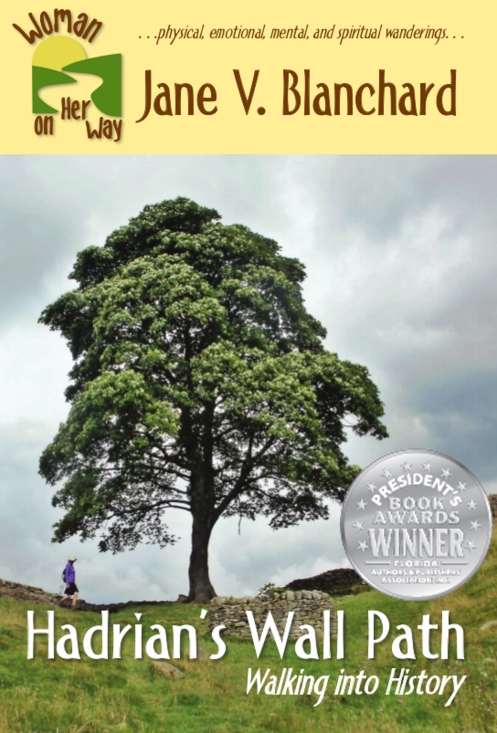
How different is your second book Hadrian’s Wall Path: Walking into History from Women of the Way: Embracing the Camino? What accolades has your second book won or received?
I am evolving as a writer, and it is evident with each of the subsequent books. The second book is more personal and humorous than the first. For my efforts, the book received the 2015 Florida Authors and Publishers Association (FAPA) president’s award for adult non-fiction.
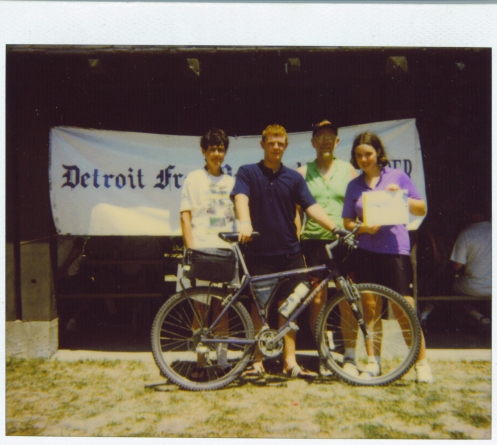
Are your two children as adventurous as you are?
Having an adventurous spirit is more of a way of looking at life than going out and having an adventure. Both children have this spirit, whether inherited or cultivated.
Our son is a VJ artist working on the cutting edge of multimedia performances. Though he enjoys cycling, his ventures involve pushing the limits of his craft and developing new techniques.
Our daughter has enjoyed traveling internationally and bicycled across the country. As the mother of a 2.5-year-old and a soon-to-be-born infant, her physical adventures are limited to local hikes and exploring nearby haunts.
You are in your 60’s but capable of mountain biking as well as racing which most people at your age can. not do? What keeps you so active & what inspires you to keep fit?
I mountain biked in my 50’s. Now, I occasionally ride my bike. In 2003, a car broadsided me and I flew 30 ft. and landed on my head. I was medevaced to a local hospital, admitted for several days, and then released. Since then, my balance is unstable. In 2013, I attempted biking the Camino from Barcelona. I fell many times. In León Spain and after 500 miles, I fell and badly lacerated my knee. When the doctor told me I could not bike for 30 days, I terminated my biciCamino. It was a disappointment, I only had 200 miles to go.
Walking is a wonderful activity for staying fit. It builds stamina and reduces stress. People of any age can walk as long as there are no health issues. Grandma Gatewood hiked the Appalachian Trail for the third time at age 75.
I also use weights and exercise videos to help keep the osteoporosis at bay. I feel better when I exercise than when I don’t.
Keeping fit is a way of life. Each morning, I walk several miles before I write. Not only is it good to help stave off the sedentary lifestyle, being out in nature before turning on the computer is healthy. It add focus and helps creativity. An early morning walk is peaceful and keeps you from overloading your brain before you enjoy the day.
Describe your work as an ‘author-entrepreneur’ as you call it.
To become successful as an author, you need a business approach. You need to become analytical. Look at your current readers (target market). Would they buy a second book or are there too many similar books? (market saturation). How will you promote the new book? (marketing plan) How is the book ranking? (competition analysis). Should you write a different kind of book? (new product analysis). Is the book financially solvent? (balance sheet).
Like many authors, you may only want to write. As tempting as that may be, to become accomplished, you must consider business strategies or hire someone to do so. Before you decide to go alone or hire an agent, be analytical. Compare “the bang for the buck.” Is it financially feasible for you to hire someone? Is the learning curve so great, that you can’t afford not to hire someone?
As you put on your business cap, it becomes easier to make sound long-range decisions about your career.

Which book(s) are you working on right now & when can my readers get a chance to see more of your work?
I am in the final editing phase of a Camino Tips: How to get the most out of “The Way.” This ebook-only work has 70 tips for before, during, and after the Camino. It is chock-full of information and links to data. I am hoping for a March/April release
I am co-authoring with my husband on a book about the Vermont Long Trail. This was my first wilderness long-distance hike, different from hiking in Europe. We hope to release this book by the end of the year.
Following these, I wish to write about bicycling the Camino from Barcelona, about hiking from Lisbon to Santiago, and about other European adventures. There just seems to never be enough time.
What comes to mind when I say the following:
Reading: Kindle I read almost exclusively indie authors and enjoy thrillers, adventure, sci-fi, and many other genres.
Cooking: A passion. I love cooking for large groups and often entertain friends and the extended family. I take it as a compliment that no one turns down an invitation for one of my meals.
My Musings: My blog where I explore thoughts on writing and becoming an indie author.
Woman Matters: A radio program that I created and hosted for two-and-a-half years on WSLR, 96.5 FM in Sarasota, FL. The show was for and about women and woman matters.
Dennis: My best friend and companion on my life’s journey.

What parting message would you like to give to most of my readers most of whom are indie authors?
As an indie author, you are responsible for your success (or failure). You can’t blame the publisher or editor. There is only you, the author, the one with the by-line. All you can do is your best—ethically.
“No one will ever blame you for trying to get it right.”
~ Lorii Myers
If at first you don’t get it right, try again. With hard work and a little bit of luck, you will find the success you are looking for.
Thank you Ma’am, for enlightening insaneowl.com, and its followers about your work as a writer. Continue the good work and all the best for your future ventures. I do hope that we may be able to speak through the medium of my blog once again in the near future. Warm regards from Fiza Pathan.
To connect with the Author, click on the links below.
Writer’s Blog: Providing strategies and support for the indie writer
Copyright © 2016 Fiza Pathan




Reblogged this on Judith Barrow.
A wonderful insightful post, ladies. Thank you
A really fascinating post – made me want to grab my hiking boots!
Thank you Fiza, for the interview. Your questions were well-tailored and fun to answer. Your kindness is appreciated.
A fascinating, illuminating and charming interview. Wonderful to meet her and learn about her interesting books. 😀
Very nice! Jane is on a mission.
Great post. What a wealth of experience.